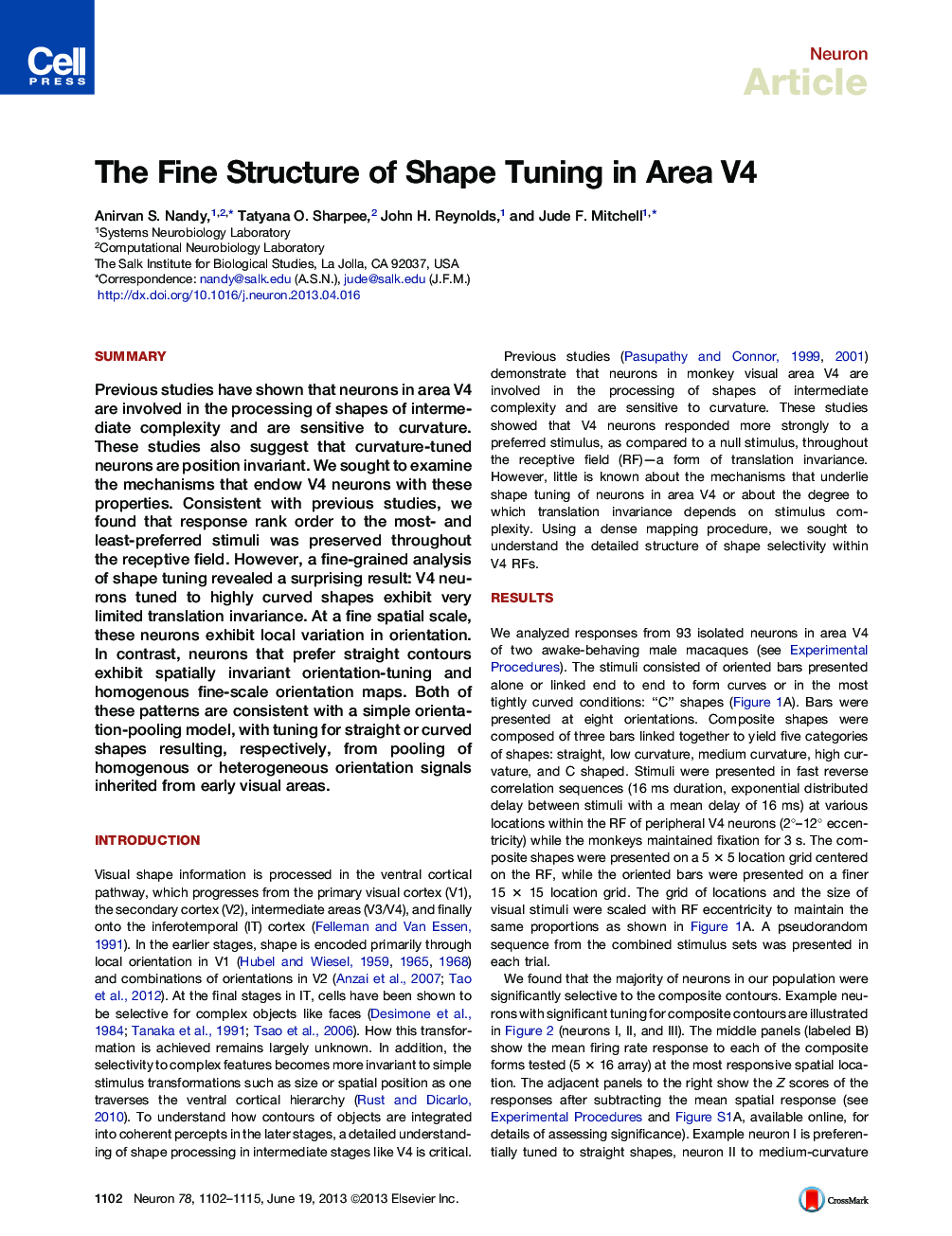| Article ID | Journal | Published Year | Pages | File Type |
|---|---|---|---|---|
| 4321162 | Neuron | 2013 | 14 Pages |
•Organization of V4 receptive fields using dual-scale reverse correlation•Curvature-tuned cells show limited spatial invariance and heterogenous fine-scale maps•Straight-tuned cells exhibit spatial invariance and homogenous fine-scale maps•Simple local pooling of fine-scale orientation signals explains contour tuning
SummaryPrevious studies have shown that neurons in area V4 are involved in the processing of shapes of intermediate complexity and are sensitive to curvature. These studies also suggest that curvature-tuned neurons are position invariant. We sought to examine the mechanisms that endow V4 neurons with these properties. Consistent with previous studies, we found that response rank order to the most- and least-preferred stimuli was preserved throughout the receptive field. However, a fine-grained analysis of shape tuning revealed a surprising result: V4 neurons tuned to highly curved shapes exhibit very limited translation invariance. At a fine spatial scale, these neurons exhibit local variation in orientation. In contrast, neurons that prefer straight contours exhibit spatially invariant orientation-tuning and homogenous fine-scale orientation maps. Both of these patterns are consistent with a simple orientation-pooling model, with tuning for straight or curved shapes resulting, respectively, from pooling of homogenous or heterogeneous orientation signals inherited from early visual areas.
